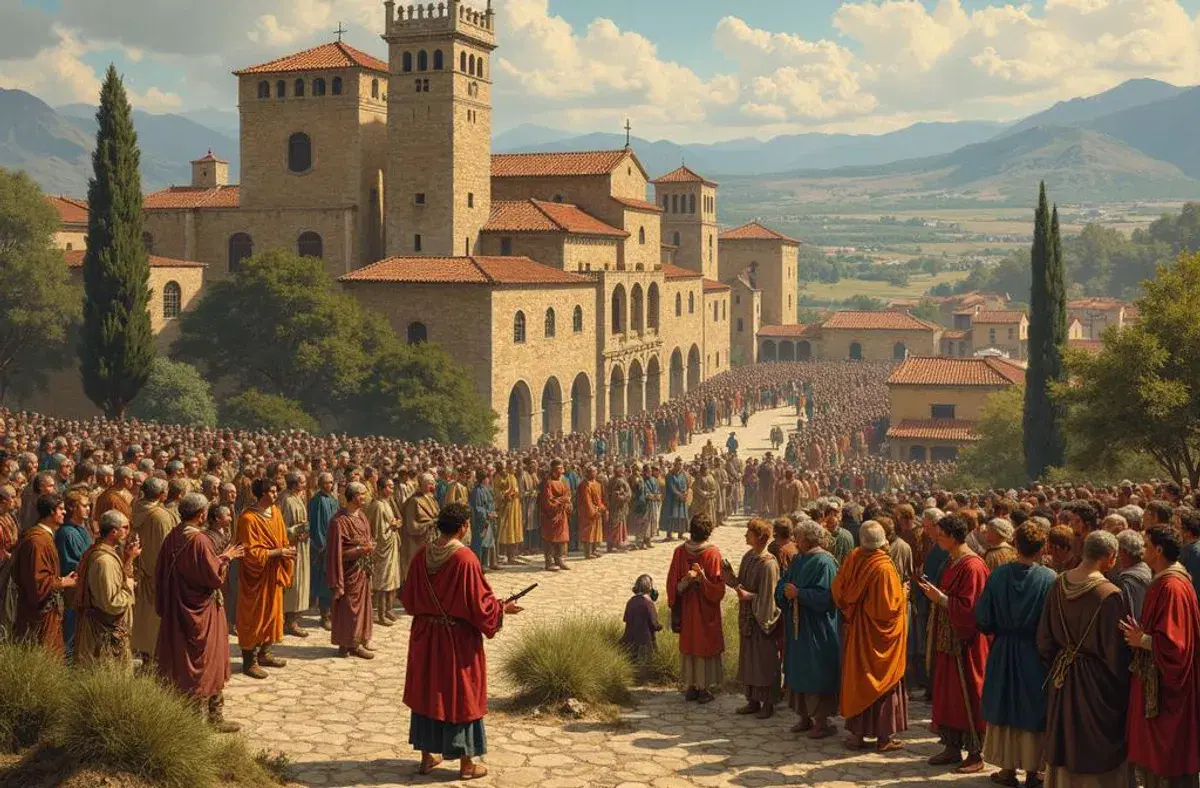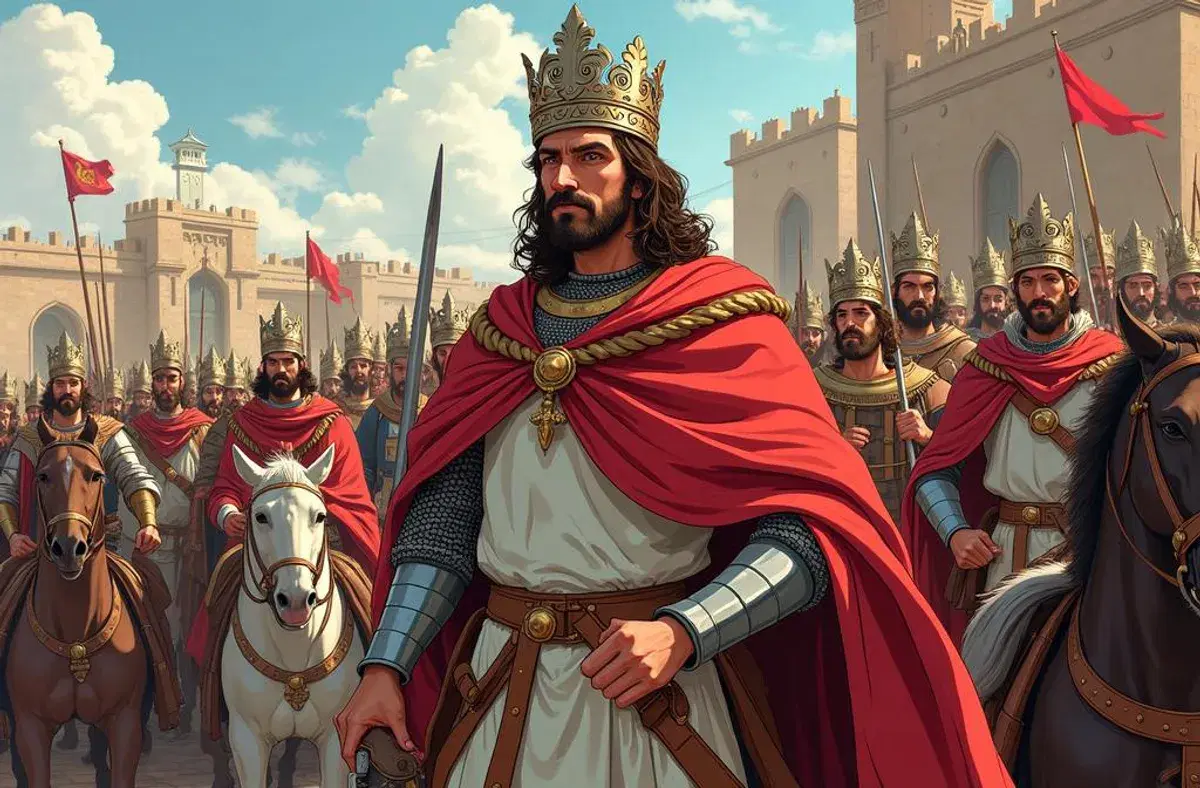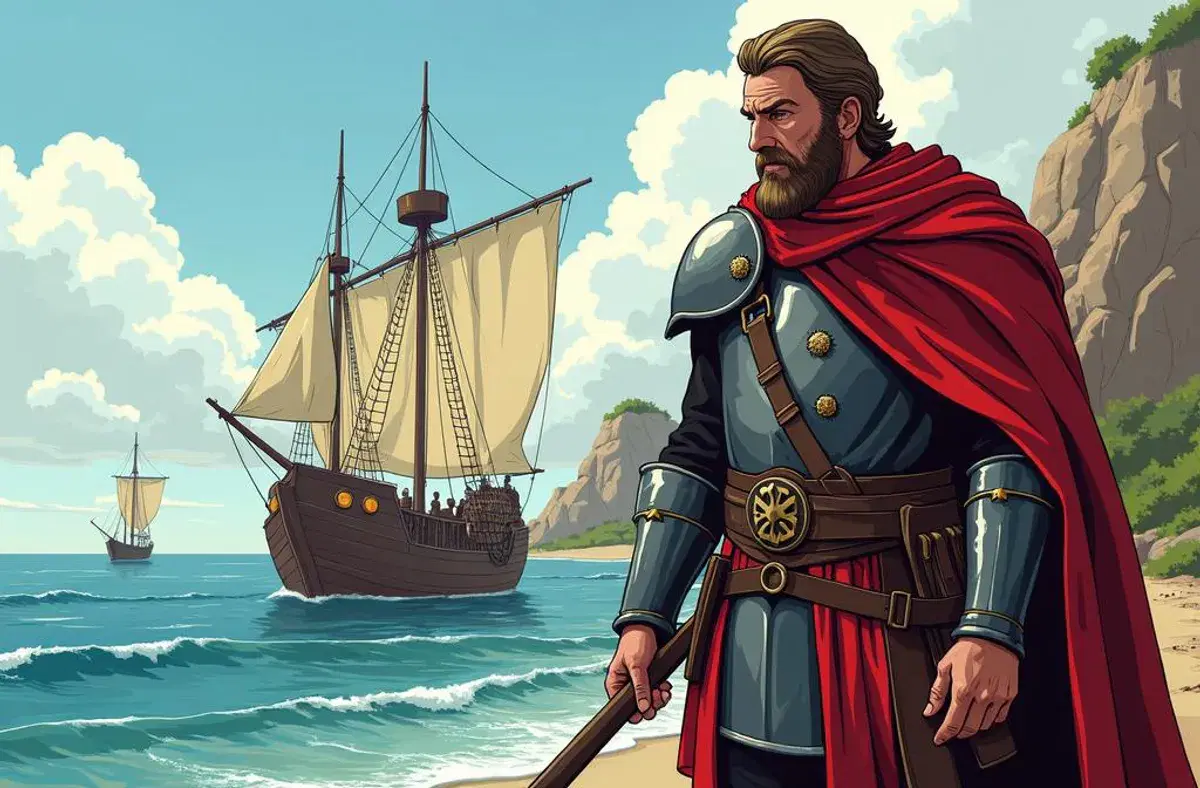Kingdom of Asturias and Cultural Evolution
The Kingdom of Asturias occupies a interesting position in early medieval Iberian history, embodying themes of resistance, adaptation, and cultural synthesis. Emerging in the aftermath of the Visigothic collapse and the Muslim conquests of Spain in the early 8th century, Asturias became the first Christian polity to push back against Islamic expansion, ultimately laying the groundwork for the Reconquista. This small but significant kingdom not only defended its territories but also became a center of religious and cultural transformation.

Kingdom of Asturias
Pelagius and the Foundation of Asturias
Asturias’s story begins with Pelagius (Pelayo), a Visigothic noble who led a rebellion against Muslim forces in the rugged Cantabrian Mountains. Following the decisive Battle of Covadonga in 722, Pelagius established the foundations of the kingdom. Though Covadonga was a modest skirmish in scale, its symbolic value ignited the hope of Christian resistance throughout the Iberian Peninsula. Pelagius’s strategic use of alliances, such as the marriage of his daughter Ermesinda to Alfonso, a noble from Cantabria, ensured the kingdom’s survival and set the stage for future expansion.
Early Challenges: Internal and External Threats
The nascent kingdom faced constant challenges. Early kings such as Fruela I battled both Muslim incursions and rebellious noble factions. Fruela’s assassination underscored the instability of Asturias’s early political landscape, as competing aristocratic factions vied for power. Subsequent rulers, including Aurelio and Silo, focused on internal consolidation, negotiating peace where possible and relocating the royal court to Pravia for strategic purposes. This pragmatic approach allowed the kingdom to weather periods of vulnerability and regroup for future growth.
Alfonso II: Strengthening the Kingdom
The reign of Alfonso II (791–842) marked a turning point for Asturias. Alfonso solidified ties with the Carolingian Empire and the Papacy, elevating Asturias’s profile within the broader Christian world. His support for the discovery of what were believed to be the relics of St. James in Galicia transformed Santiago de Compostela into a major pilgrimage site, reinforcing Asturias’s role as a spiritual and cultural hub.
Militarily, Alfonso II conducted strategic raids into Muslim territories. These campaigns were less about territorial conquest and more about resource acquisition and undermining enemy morale. Meanwhile, he initiated a policy of repopulating strategic areas in Galicia, León, and Castile, ensuring long-term control and fostering economic development.

Alfonso II
Resilience Under Ramiro I and Ordoño I
Ramiro I (842–850) dealt with significant challenges, including internal power struggles and external threats such as Viking raids. His leadership during the Viking assault on Corunna in 844 demonstrated Asturias’s growing defensive capabilities and military organization. His successor, Ordoño I (850–866), continued this trajectory of military success, defeating prominent Muslim leaders and extending Asturian influence into the Ebro Valley.
Apex Under Alfonso III
Alfonso III (866–910) presided over Asturias’s golden age. Under his reign, the kingdom expanded significantly, capitalizing on internal divisions within the Muslim territories. By the late 9th century, Asturian control extended into northern Portugal and parts of central Spain, with campaigns reaching as far south as Mérida.
Domestically, Alfonso III fortified urban centers and sponsored the construction of churches, symbolizing both military strength and Christian identity. However, internal family disputes led to his abdication and the subsequent division of Asturias into León, Galicia, and Asturias proper. Despite this fragmentation, Alfonso’s legacy endured as the kingdom’s most transformative ruler.
Religion and Cultural Syncretism
Asturias’s cultural development was deeply influenced by its religious identity. Christianity’s gradual spread across the region coexisted with older Celtic and pagan traditions, creating a unique cultural synthesis. Sites such as the Santa Cruz dolmen exemplify this blend; originally a prehistoric burial site, it later became a Christian landmark, embodying the enduring significance of sacred spaces.
Monasticism also played a pivotal role in Asturian society. Figures like Turibius of Liébana and Beatus of Liébana guided the kingdom’s spiritual life. Beatus’s Commentary on the Apocalypse framed Muslim Córdoba as the biblical Babylon, reinforcing a sense of Christian unity against external threats. His opposition to adoptionism, a theological controversy questioning Christ’s divine nature, further established Asturias as a bastion of orthodoxy.
Camino de Santiago: A Cultural Milestone
Asturias’s contribution to the Camino de Santiago cemented its place in medieval Christendom. The discovery of St. James’s relics under Alfonso II’s reign attracted pilgrims from across Europe, creating a cultural and economic network that connected Asturias to the broader Christian world. This pilgrimage route not only reinforced Asturias’s spiritual significance but also facilitated the exchange of ideas and traditions.
Asturias as a Symbol of Resistance

Asturias
The Kingdom of Asturias’s legacy lies in its resilience and adaptability. From Pelagius’s defiance at Covadonga to Alfonso III’s expansive campaigns, Asturias symbolized the persistence of Christian rule in Iberia during a time of immense challenges. While its political structure evolved into the Kingdom of León, Asturias remained a cultural and historical cornerstone, representing the early stirrings of the Reconquista and the enduring spirit of its people.





.webp_1747676619394)